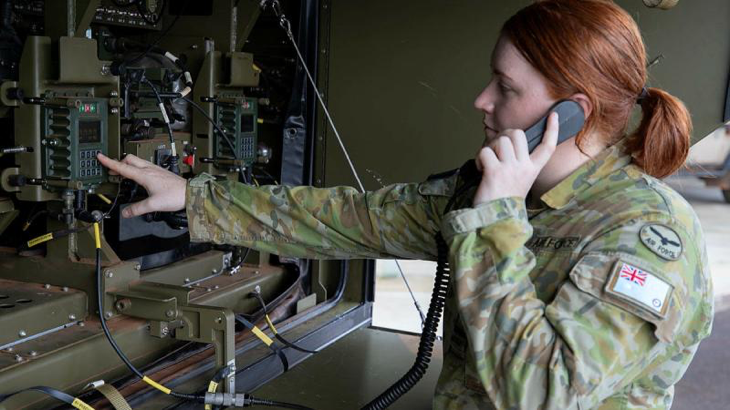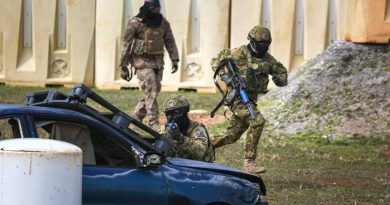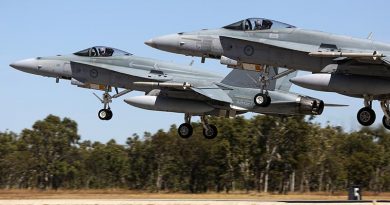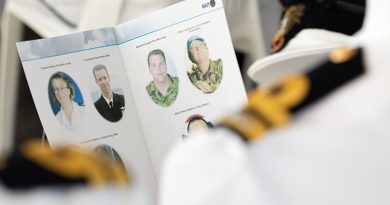Piecing together the air battlespace puzzle

WHEN fighter jets are tearing through active military airspace ready for combat, it’s air battle managers (ABM) on the other end of the radio telling them where to go and what to do.
CAPTION: Air battle manager Flying Officer Kim Petterson performs start-up checks on a G-Wagon Command Post Module being trialled under Project Bandicoot. Story by Corporal Veronica O’Hara. Photo by Sergeant Pete Gammie.
Inside their deployable cabin in semi-darkness, light from computer screens and communication consoles glows on their faces. There, they oversee the battlespace, radio instructions and relay positions of friendly and enemy aircraft.
114 Mobile Control and Reporting Unit’s (114MCRU) ground-based battle managers, such as FLGOFF Kim Petterson, don’t control aircraft daily like those in 3 Control and Reporting Unit. But when air combat exercises involve fighter aircraft or live firing, 114MCRU surges into action and deploys to the field.
They fuse information from radar, data feeds and ISR (intelligence, surveillance and reconnaissance), then decide how to share that to aircraft.
Their mission sets include offensive and defensive counterair operations, as well as providing domestic functions, ensuring aircraft are where they need to be, have sufficient fuel, the correct information and are ready for tactical employment.
Being an ABM at Darwin expands on the typical role because of the whole-of-unit deployment cycle, according to FLGOFF Petterson.
“It’s more than controlling jets from an ops room,” she said.
“You see the work involved to convoy across the country with heavy vehicles and deploy a radar along with the daily maintenance conducted on the multitude of systems operated by 114MCRU and 41 Wing.
“You get the whole picture and an appreciation for all the working parts allowing us to do our job.”
Three years ago, FLGOFF Petterson arrived at 114MCRU after completing officer aviation – mission controller training at RAAF Base Sale and ABM basic course at RAAF Base Williamtown.
FLGOFF Petterson described her work as figuring out where bits of the puzzle fit and how best to communicate this within the team and across the battlespace.
During the past six months, she has led testing and evaluation of a 41 Wing Agile C2 innovation known as Bandicoot, which deployed to WA during Exercise Talisman Sabre.
Technicians, air surveillance operators and FLGOFF Petterson operated a six-wheel G-Wagon fitted with a communications suite and, in a small tent alongside, used laptops for aircraft control and strategic connectivity.
Her seven-strong team is examining what the configuration can do and possible improvements.
The experimental system is in contrast to the six to eight shipping containers plus auxiliary equipment 114MCRU normally deploys with.
The crew balanced their primary jobs with three months’ preparation before driving to RAAF Base Curtin and Cape Leveque for trials.
This included training on new equipment, creating packing lists, ensuring compliance and mission planning.
“We were handed some kit and a blank page of, ‘How do you get it out-field, how do you operate it, how will you test it?’” FLGOFF Petterson said.
“Every day I’d walk in to work and someone would ask something new, which we had to work out.”
In November, during wet season, the team is trialling Bandicoot in the field again and will have to contend with keeping the electronics dry and operating in the Top End’s humidity.
FLGOFF Petterson said the project has everyone in the unit excited.
“We have smart people in our organisation, so giving them something to work on and be passionate about is special,” she said.
.
.

.
.





